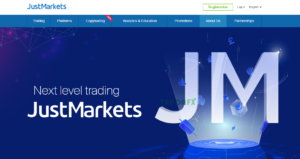What is Relevance AI?
Relevance AI helps businesses build and deploy an AI workforce to boost efficiency and growth without adding extra hires.
It’s built for teams that don’t have a coding background. No confusing jargon, no hidden technical hurdles. Just a straightforward way to create AI agents that handle tasks across sales, marketing, customer support, and research!
Relevance AI has secured $10 million in Series A funding back in 2023, which is pretty impressive. They were even featured in Forbes Asia’s 100 to Watch list.
What I appreciate most about Relevance AI is how it makes artificial intelligence more accessible and user-friendly. By providing a no-code interface and the ability to deploy multiple AI agents, it empowers non-technical users to automate tasks such as customer inquiries and data analysis.
Relevance AI bridges the gap between AI technology and business operations, allowing a wider range of professionals to leverage AI without needing extensive programming knowledge.
Who is Relevance AI Best For?
Here’s who Relevance AI is best for:
- Small to mid-sized businesses (SMBs) looking to improve their sales and marketing without significant investment in additional staff.
- Non-technical users like business owners, marketers, and sales teams who want to take advantage of AI without deep programming knowledge.
- Companies seeking automation for their repetitive tasks across various departments, such as sales, marketing, customer support, and research.
- Organizations wanting to scale their operations without increasing their headcount.
- Businesses aiming to deliver personalized content, marketing messages, and sales outreach.
- Sales, marketing, customer support, and research teams looking to streamline workflows and focus on high-value tasks.
- Businesses using popular tools like HubSpot, Salesforce, and Zapier can easily integrate Relevance AI into their existing tech stack.
Overall, Relevance AI is designed to make AI-powered automation accessible to businesses of all sizes. It’s particularly useful for enhancing efficiency, personalization, and scalability across various business functions.
Relevance AI Key Features
Relevance AI offers several key features that enhance business operations through AI-powered solutions:
- AI Agents: Scale your business operations without having to hire more people with autonomous AI agents.
- No-Code Interface: Create repeatable workflows without any coding skills.
- Customizability: Tailor AI agents with specific instructions and processes, whether fine-tuning a workflow or adjusting tasks to fit unique business needs.
- Integration Capabilities: Connect lots of integration options like Zapier and Snowflake so it easily fits into different tech ecosystems.
- Security and Compliance: GDPR-ready and SOC 2 (Type 2) certified for top-tier data security and privacy controls.
- Multi-Model Support: Supports multiple AI models for flexibility in choosing the right model for specific tasks.
- Tool Builder: Create custom integrations and automation for better agent capabilities.
- Customizable AI Workforce: Build and manage an entire AI workforce in one visual platform.
These features help businesses improve operations, boost productivity, and scale expertise without adding more staff.
How to Use Relevance AI
Here’s how I created and set up my first AI avatar with Relevance AI:
- Sign Up for Relevance AI
- Familiarize Yourself with the Dashboard
- Create an AI Agent
- Fill Out the Agent Profile
- Integrate the Necessary Platforms
- Add Core Instructions
- Give Your Agent Abilities
- Add Tools
- Choose the Approval Mode
- Edit the Advanced Settings
Step 1: Sign Up for Relevance AI

I started by going to relevanceai.com and hitting “Sign Up” on the top right.
Step 2: Familiarize Yourself with the Dashboard

After creating an account with my email and logging in, I was taken to my main dashboard.
In the center, I could start describing the AI agent I wanted to create. I appreciated how Relevance AI made some suggestions for inspiration.

Below that, I could search through different agent templates by category.

Under the AI agent templates were the tool templates. These templates serve as starting points to create and equip AI agents with specific capabilities.

On the right side panel was a checklist of things to accomplish and some helpful videos on how to use Relevance AI to start building my AI workforce. I appreciated this step-by-step guidance so I didn’t have to feel overwhelmed!
Step 3: Create an AI Agent

To create your first AI agent, select “Agents” and hit “New Agent” on the top right.
Step 4: Fill Out the Agent Profile

Start by choosing your AI Avatar’s profile image by clicking on it. Next, enter your agent’s name and a brief description of its role.
I wanted to create an AI agent that handles leads collected by Hubspot. I named my agent “LeadLinker” with the following description:
“LeadLinker is a smart, efficient AI agent designed to manage and optimize leads collected through HubSpot. It automatically qualifies, categorizes, and nurtures leads, ensuring timely follow-ups and personalized communication. LeadLinker analyzes lead behavior, tracks engagement, and suggests tailored strategies to boost conversion rates. It seamlessly integrates with your HubSpot CRM, keeping your sales team informed and focused on the most promising opportunities.”
Step 5: Integrate the Necessary Platforms

Scrolling a bit further down are your AI agent’s “Triggers” which can be found in the “Integrations” section. These triggers are how you give your AI Agents tasks to complete.
While the simplest way to give your AI agent a task to complete is by sending it a message, you’ll often want to give your agent work from external systems. Since I want to create an AI agent that handles leads collected by Hubspot, I would connect my Hubspot.
In addition to these triggers, you can also create custom webhooks and API triggers.
Step 6: Add Core Instructions

Select “Core Instructions” from the left panel menu to tell your AI agent how you want it to work. You can do this by providing role information and examples of the tasks it might receive and how to handle them. If you want your agent to use a tool, hit “/” on your keyboard!
Step 7: Give Your Agent Abilities

While you can send your AI agent basic tasks to complete, it’s much more helpful to give them abilities and tools. Otherwise, Relevance AI would just be another LLM!
Hit “Abilities” in the left panel menu. You’ll need to be on the Business plan to enable scheduled messages, but you can allow your agent to escalate to you when it doesn’t know how to act on the Pro plan.
The Escalation feature lets you add an email or Slack channel where your AI agent will reach out to a human if it can’t handle situations on its own. Just add your email or Slack channel!
Step 8: Add Tools

To enhance your AI agent’s capabilities further, select “Tools.” This is how you give your AI agents specific skills (like searching the Internet, analyzing PDFs, etc.)

Add custom tools by hitting “Add tool,” or select prebuilt tools from the wide selection of templates. Once you’ve found a tool you want to add, hit “Add” next to it.
Step 9: Choose the Approval Mode

Once the tool has been added, select it from your tools. From there, choose from three different ways for how you want your AI agent to use the tool:
- Auto run (the AI agent will always run the tool when it needs to)
- Approval required (the AI agent will always ask for your approval before running the tool and you can customize how the tool runs)
- Let agent decide (the AI agent chooses between auto run and requiring approval)
Step 10: Edit the Advanced Settings

Last but not least, go to “Advanced Settings.” Here’s where you can choose:
- The language model that powers your AI agent’s decisions
- How long your AI agent runs (15 minutes or 24 hours – available on the Business plan)
- How many times your AI agent will retry a tool that fails
And that’s how you can start creating and setting up AI agents with Relevance AI!
Overall, Relevance AI made it easy to create and customize my AI agent for managing HubSpot leads. The clear step-by-step guidance, intuitive dashboard, and variety of templates allowed me to set up my agent effortlessly without feeling overwhelmed.










More Stories
Rock-West.com Review
JustMarkets Review
Jotform Review: The Best Form Builder or Just Overhyped?